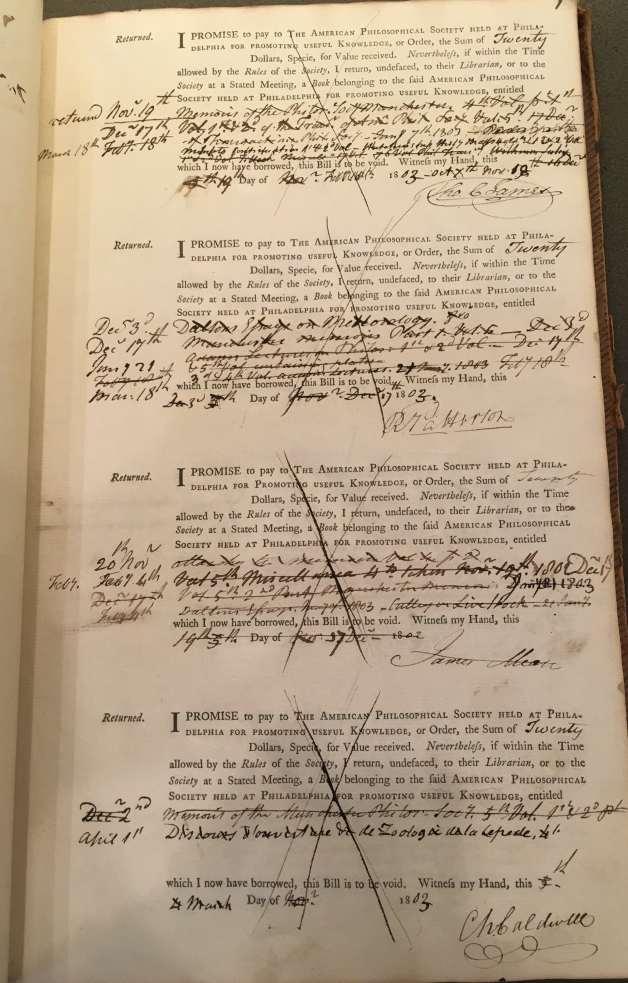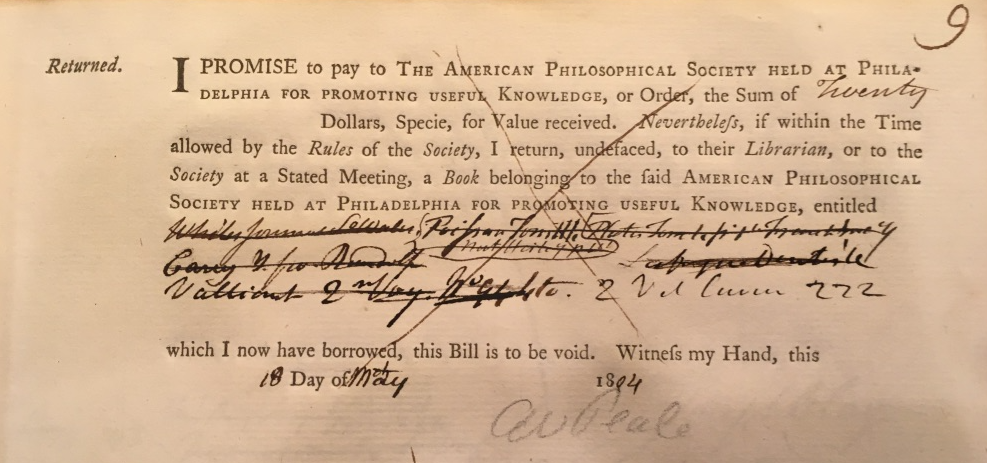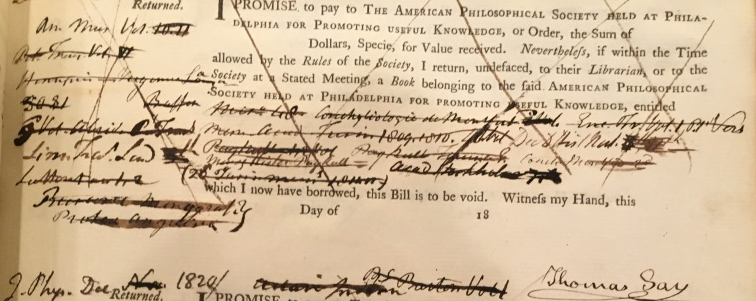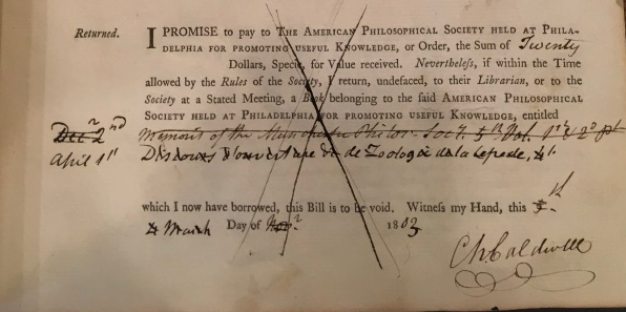Living With Books: 140 Years of Library Borrowing Records at the APS
The American Philosophical Society’s archive (Series VII.2.e) holds an astounding record of nearly 140 years of reading by Members of the Society from 1802-1941. The Society’s Librarians documented the borrowing of thousands of books by some of the most important scientists, intellectuals, and politicians from the early republic to the Second World War in three unassuming folio “loan books.” The extreme breadth of the data offers historians of the book an unusually rich source to understand elite reading habits, intellectual interests, and cultural tastes at the first learned society in North America.

The Society’s book collecting was scattershot throughout most of the 18th century, but a critical mass of material was built during those early decades. The Society became more serious about the care, development, and use of its collections after 1800. Beginning in 1802, the Society’s officers changed the Library’s regulations to allow any resident member to borrow any book in the Library for one month as long as a security deposit was left to assure the book would be returned “uninjured.” A one-half dollar fine would be levied each month the book was late. When Members returned books, the title was struck through in the ledger, and, while mostly legible, some entries require some effort to decipher. A quick perusal of the first loan book shows that early Members were very interested in reading the latest findings in scientific journals, reflected in a rule approved in October 1803 banning the loan of the latest number of any journal.
While the loan books don’t record the borrowing of Founders like John Adams or Alexander Hamilton (see the New York Society Library’s City Reading project for examples of their library use), some very important early American figures borrowed books from the Society. A short list includes Benjamin Smith Barton, Nicholas Biddle, Alexander Dallas Bache, Mathew Carey, William Short, Thomas Cooper, and Titian Ramsay Peale.

A few examples of borrowing offer an intriguing glimpse into the work habits and research interests of early Members. In 1804, the painter and museum owner Charles Willson Peale borrowed a half-dozen books, including John White’s highly illustrated Journal of a Voyage to New South Wales, the third volume in the natural history series of the Encyclopédie méthodique, the first book of plates from d’Alembert and Diderot’s Encyclopédie, and Georges Cuvier’s Lecons d'anatomie comparée (a two-volume set given to the Society by Cuvier in 1801). The architect Benjamin Henry Latrobe borrowed a volume of “plates belonging to the English edition of Denon’s Egypt” in 1807, a volume not in the Society’s collections today. The zoologist, etymologist, and conchologist Thomas Say checked out Denys de Montfort’s second volume of Conchyliologie systématique et classification méthodique des coquilles in 1820, probably soon after he returned from the Long Expedition to the Rocky Mountains in 1819-1820.

Many more examples are waiting to be mined from these volumes. Once understood more fully, these loan books offer the promise of an expanded view of the bookish preferences of elite scientists and thinkers over nearly a century-and-a-half of American history.

